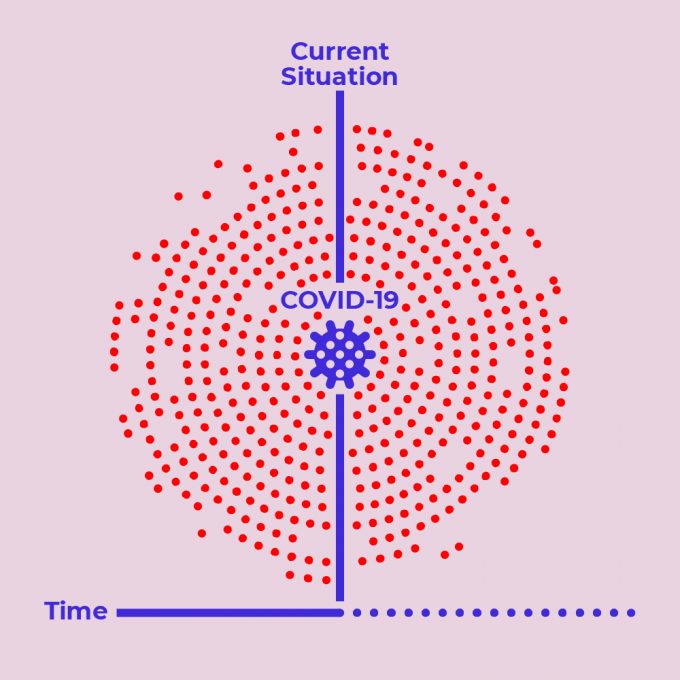
Reproductive number
The effective reproduction rate Re indicates how many people an infected person infects on average. We estimate the effective reproduction number Re in Switzerland based on the latest available data from the FOPH. Individual Re estimates should not be considered isolated (see also link and link for further explanation). The Science Task Force combines estimates of the reproduction rate with other indicators and analyses to assess the epidemiological situation link. Re values are available in csv format at https://ibz-shiny.ethz.ch/covid-19-re-international/.
The Re value which is calculated today reflects the infection dynamics of 10-13 days ago for Switzerland and 14-17 days ago for cantons, due to the delay between infection and positive test result. We perform new calculations whenever new data from FOPH is available. On Tuesday, Wednesday, and Thursday, this does however not result in additional days for which Re values are available due to weekend effects. Thus, on Friday, four additional days with Re values become available. The most recent Re value is marked with an asterisk in the figure.
IMPORTANT: In general, we note that the Re estimates for the last days may still be consolidated during subsequent days. This consolidation in particular occurs for small regions, during changes in the dynamics, and in case of small case numbers. For details on methods and caveats please see https://ibz-shiny.ethz.ch/covid-19-re-international/.
An overview of the current epidemiological situation based on the reproductive number Re and other indicators can be found here. More extensive updates of the epidemiological situation are published by the Science Task Force in the form of Policy Briefs.
More information and additional tools for the assessment of the epidemiological situation based on Re can be found here. In particular, we provide estimates of Re for individual cantons, larger Swiss regions, and other countries. These Re estimates, as well as the case numbers per country, are displayed on a world map. Additionally, we show estimates on the changes of Re following the introduction or release of interventions. Lastly, we display the estimated number of daily new infections based on the daily case data. This time course is used for the Re calculations. The results for Re are available as a .csv file.
UPDATE (25.1.2021): We now construct 95% confidence intervals based on a block bootstrapping procedure. We found in simulations that this new procedure better reflects the uncertainty in the parameter estimates compared to our previous procedure. We are currently writing up an explanation of the new procedure and will post it as soon as it is available. In the meantime, the method can be accessed through our code link. Our general approach (up to the bootstrapping procedure) is explained in link.
Update (15.2.2021): We now take the Re estimate on the original data as the Re point estimate, replacing the mean of the bootstrap replicates. The aim is to make the point estimate more stable.
Further, we use the uncertainty intervals from EpiEstim in case it is larger than the bootstrapping interval in order to obtain conservative uncertainty intervals.
Updated code is available [here].